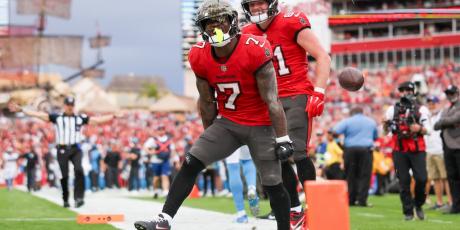John Paulsen's 2024 Draft Day Strategery

Updated 8/29 - Updates in blue
It’s time.
The bulk of the fantasy football draft season happens in August, so by request, I've bumped this article up in my annual schedule. I've participated in a few industry and best ball drafts and I think I have a pretty good handle on my draft strategy for 2024.
This piece is written with a 12-team half-PPR draft in mind, but Rule No. 1 of fantasy football is to know your scoring system. They cover this on the first day of Fantasy Football 101 while incoming freshmen are still trying to decorate their dorm rooms. The scoring system is going to influence positional value and there are a number of different scoring systems out there.
Drafters in standard leagues can favor running backs a bit more in the early rounds since that position gets a boost in that format.
Drafters in PPR formats can safely go WR-heavy in the early rounds if they so choose. Drafters in two-quarterback or superflex (i.e. QB-eligible flex) leagues should ignore all the late-round quarterback talk and be sure to draft a couple of top-20 passers before they’re gone.
Managers drafting in 10-team leagues should be able to wait for an extra round or two to draft the targets I discuss below since there are fewer picks in each round.
Managers in TE-premium leagues (usually 1.5 PPR for tight ends) should bump up the position as a whole and target high-volume players like Sam LaPorta, Travis Kelce, Mark Andrews, and Trey McBride in the first few rounds.
A great way to discover how a particular scoring system impacts the different positions is to use our Top 200 Value-Based Rankings Report, change the settings, and see how the player values change. We’ve added some functionality to the tool to allow users to blend the rankings with both our Relative Value score (our name for Value-Based Drafting) and Average Draft Position.
General Strategery
Way back in the year 2015, I had an epiphany when it came to formulating my overall draft strategy. At the two onesie positions—quarterback and tight end, where managers typically only have to start one—I felt great about Carson Palmer in the 13th round and Delanie Walker in the 10th/11th. (Man, 2015 was really a long time ago.) I also advocated for the "Angry Tom" Strategy, which revolved around drafting a royally pissed-off deflator Tom Brady in the 10th/11th round and taking Palmer later as his backup. This worked out even better than expected since Brady’s suspension was lifted and he played a full season. Oh, and Walker finished as the No. 3 tight end that year.
Since then, I have been trying to identify the best values and/or options at quarterback and tight end and then build my draft plan around them, and for the most part, it’s worked.
So let’s start with the…
Quarterbacks
Is "late-round quarterback" dead? No, depending on your definition of “late-round” it’s a viable strategy this season. But there do seem to be more fantasy analysts advocating for an early- or mid-round quarterback approach. I’m certainly more willing to pull the trigger on an elite passer this season, and I think it has something to do with a perceived value drop-off at other positions somewhere near the 2nd/3rd turn in 12-team drafts.

- All Premium Content
- The Most Accurate Rankings Since 2010
- Expert Draft Picks w/ Draft Hero
- Highest Scoring Lineup + Top Available Players w/ LeagueSync
- ...and much more!




















